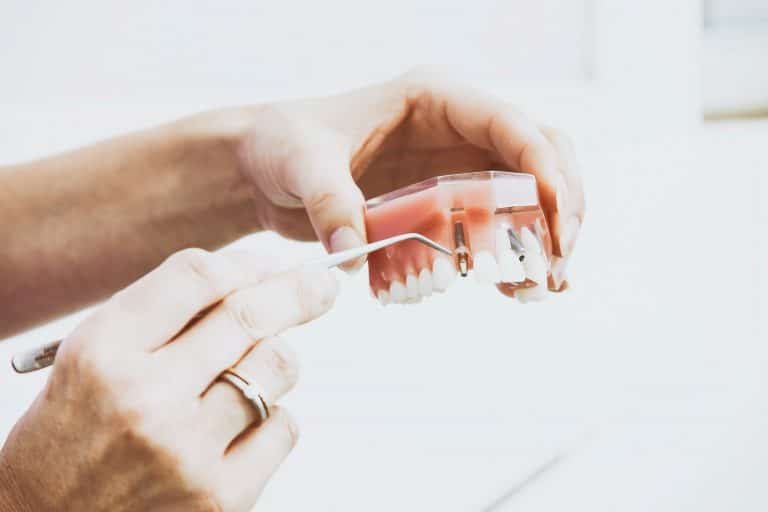Endometriosis is a long-term condition in which lesions resemble the uterine lining outside the uterus.
It is estimated that 10 to 15% of women of reproductive age are affected. Endometriosis can be classified into several stages. These are based on the following:
- Number
- Location
- The severity of endometriosis lesions
In this article, Dr. Harsh Sheth takes a closer look at the types of endometriosis lesions, endometriosis staging, and whether endometriosis lesions can be removed.
Dr. Harsh Sheth, who provides excellent Laparoscopic Surgery from Mumbai, has comprehensive training and experience in cutting-edge minimal access surgery.
He has performed hundreds of GI and bariatric surgeries in Mumbai during his ten years of practice. He’s one of the city’s most sought-after laparoscopic surgeons.
In This Article
- What are endometriosis lesions?
- Where are endometriosis lesions found?
- Are there various kinds of lesions?
- Peritoneal lesions on the surface
- Endometriomas
- Deep infiltrating endometriosis (DIE)
- How do you know if you have endometriosis?
- Is it possible to remove endometriosis lesions?
- Other endometriosis treatments
- Last but not least
What are endometriosis lesions?
The endometrium is the lining of your uterus. The endometrium thickens during your menstrual cycle to prepare for the implantation of a fertilized embryo.
The endometrium is shed during your period if this does not happen.
Endometriosis lesions are tissue patches that look like the endometrium. They, unlike the endometrium, grow outside of the uterus.
Additionally, these lesions thicken and bleed during your menstrual cycle.
However, because this tissue cannot leave your body, it can cause endometriosis symptoms like:
- Pain
- Swelling
- Digestive issues
Endometriosis lesions come in various sizes and are frequently seen as nodules or cysts. They’re primarily brown, black, or blue. They can, however, be red, white, or clear at times.
According to Dr. Harsh Sheth, who is also a leading bariatric surgeon in Mumbai, It’s also possible that endometriosis lesions are linked to adhesions. Adhesions are scar tissue bands that can cause organs and tissues in the pelvis to adhere to one another.
Where are endometriosis lesions found?
Endometriosis lesions are most commonly found in the following areas:
- Ovaries
- Fallopian tubes
- The outside surface of the uterus
- Ligaments surrounding the uterus
Endometriosis lesions can also be found in other parts of the pelvis, including the following:
- vulva
- vagina
- cervix
- bladder
- ureters
- intestines
- rectum
Endometriosis lesions mainly affect the organs and tissues of the pelvis, but they can also be found in other places in rare cases. A few examples include:
- The liver
- Lungs
- Brain
Are there various kinds of lesions?
Endometriosis has three different types of lesions. These get generally classified according to the geographic location in which they occur. Multiple types of endometriosis lesions can occur at the same time.
Peritoneal lesions on the surface
On the peritoneum, there are superficial peritoneal lesions. This is the tissue that lines the organs and the pelvic cavity. It’s the most common type of endometriosis lesion, accounting for about eighty percent of all cases.
Endometriomas
Endometriomas are cysts that most commonly develop on the ovaries, though they can also develop in other tissues.
Endometrioma affects between 17 and 44 percent of people with endometriosis.
The endometriosis tissue bleeds into the cyst with an endometrioma, accumulating a brown fluid. Endometriomas are often referred to as chocolate cysts because of this.
Deep infiltrating endometriosis (DIE)
Endometriosis lesions that penetrate 5 millimeters (mm) or more into the affected tissue are referred to as deep infiltrating endometriosis (DIE).
It is estimated that about 20% of people with endometriosis are affected.
DIE is the most aggressive type of endometriosis, usually accompanied by severe symptoms. The following are the main areas where DIE can occur:
- Ligaments surrounding the uterus
- The tissue between the uterus and rectum (pouch of Douglas)
- Area of the vagina known as the posterior fornix
- The tissue separating the vagina and rectum (rectovaginal septum)
- Urinary tract, including the bladder and ureters
- Intestines
How do you know if you have endometriosis?
“The only way to know for sure if you have endometriosis is to have a diagnostic laparoscopy,” says Dr. Harsh Sheth, a leading laparoscope from Mumbai.
A laparoscope gets used to examine the organs and tissues of your pelvis during laparoscopy. It’s a minimally invasive procedure that requires only a few small incisions.
A biopsy sample from an endometriosis lesion gets frequently taken during this procedure. After that, the biopsy sample gets thoroughly examined in a laboratory.
Other imaging techniques such as ultrasound or magnetic resonance imaging (MRI) may get used during diagnosis and treatment planning.
Is it possible to remove endometriosis lesions?
As previously stated, a surgical diagnosis using laparoscopy is required to determine whether or not you have endometriosis.
Endometriosis lesions can also be surgically removed once the diagnosis of endometriosis has been confirmed.
If more conservative treatments haven’t worked or you’re having trouble conceiving because of endometriosis, surgery to remove the lesions get usually recommended.
A laparoscope gets frequently used in endometriosis surgery.
The surgeon searches for endometriosis lesions during the procedure.
They’ll either destroy or remove them at that point. This procedure keeps your fertility intact. Excision and ablation are the two types of laparoscopic surgery used to treat endometriosis.
Excision is more effective at alleviating symptoms in most cases. The surgeon carefully cuts away the endometriosis lesions during excision.
During ablation, endometriosis lesions are destroyed using heat, freezing, or a laser beam.
Endometriosis lesions on the outside of the uterus and surrounding tissues, such as the ovaries, can be removed with a hysterectomy.
This procedure involves the removal of the uterus, ovaries, fallopian tubes, or both the ovaries and fallopian tubes.
This is usually a last resort option because you won’t get pregnant afterward. The recurrence of endometriosis lesions after surgery is relatively standard.
The recurrence rate after surgery is estimated to be between 6 and 67 percent, depending on several factors such as the type of surgery and endometriosis lesions.
Some evidence shows that excision has lower recurrence rates in women with endometriosis.
Before deciding to have surgery, it’s critical to discuss all the risks and benefits with your doctor.
Other endometriosis treatments
If surgery is not an option for you, you may get benefits from other endometriosis treatments, such as:
Medications: Endometriosis symptoms can get treated with a variety of drugs.
- Hormonal contraceptives, such as the birth control pill or an intrauterine hormonal device (IUD), may help with endometriosis pain or
- Gonadotropin-releasing hormone (GnRH) agonists stop the production of hormones necessary for your menstrual cycle, resulting in temporary
- Over-the-counter (OTC) medications, such as ibuprofen (Advil, Motrin) and naproxen (Aleve), and acetaminophen (Tylenol), which may be helpful for mild pain or swelling due to endometriosis
- Complementary and alternative medicine (CAM): Some people say that complementary and alternative medicine (CAM) therapies like herbs and supplements, acupuncture, and massage therapy help them feel
- Changes in your way of life: Endometriosis symptoms may be alleviated by making lifestyle
This can include things like changing your diet:
- Finding effective stress-reduction techniques
- Obtaining adequate sleep
- Regular physical activity
- Enlisting the help of family and friends
- A support group or a mental health professional
Endometriosis may necessitate the use of a combination of treatments. You may also need to try various treatment combinations before determining what works best for you.
Last but not least
“Endometriosis causes lesions made up of tissue similar to the lining of your uterus to appear in places they aren’t supposed to be,” says Dr. Harsh Sheth, a renowned laparoscopic surgeon in Mumbai.
This can cause:
- Pain
- Swelling
- Digestive issues, among other
Endometriosis can also harm fertility.
The uterus and ovaries are the most common sites for endometriosis lesions. They can, however, affect the vaginal area, intestines, and urinary tract.
Endometriosis is classified into stages based on the number, location, and severity of endometriosis lesions.
However, the severity of your endometriosis symptoms does not always correspond to the stage of your endometriosis.
Surgery to remove endometriosis lesions may be recommended in some cases. When surgery is not an option, the following may be used to help relieve endometriosis symptoms:
- Medications
- Complementary and alternative therapies
- Lifestyle changes










![Home Renovation Guide [2025]](/app/uploads/2021/04/design-hacks-1-378x300.jpg)
